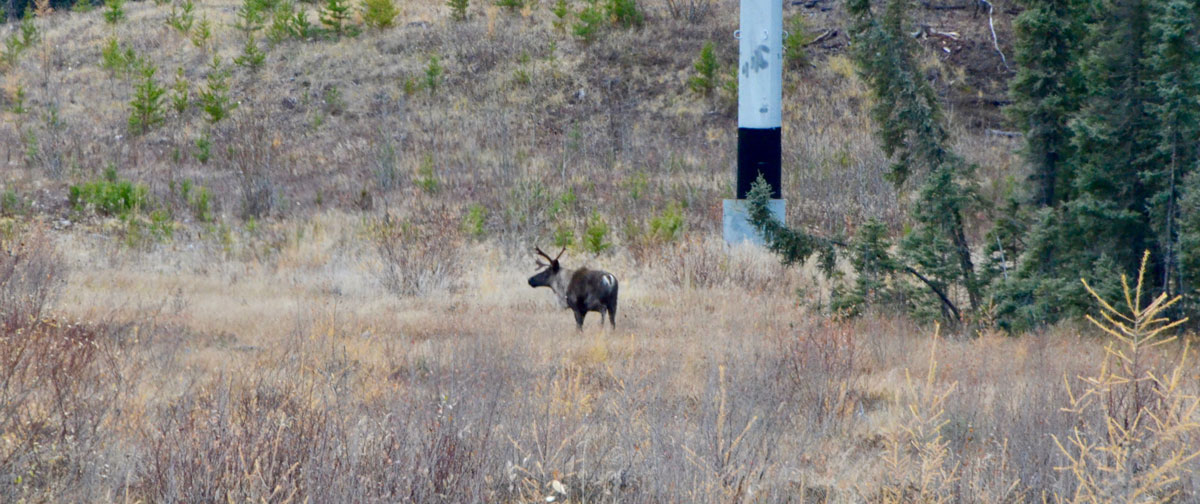Jasper National Park is one of Canada’s most spectacular and beloved national parks. Part of the UNESCO Canadian Rocky Mountain Parks World Heritage Site, Jasper protects spectacular scenery and biodiversity that millions come to visit every year.
Jasper National Park preserves biodiversity and protects Alberta's natural beauty. It's protected status helps provide habitat for species like grizzly bears, elk, wolves, and woodland caribou. It is known for its rugged viewscapes, breathtaking lakes and awe-inspiring mountains. Even the mighty Athabasca River begins flowing straight from the Columbia Icefield in Jasper National Park.
Jasper National Park is located in Treaty 6 and 8 on the traditional lands of the Anishinabe, Aseniwuche Winewak, Dene-zaa, Nêhiyawak, Secwépemc, Stoney Nakoda, Mountain Métis and Métis.
With such important ecological and cultural values inside the park, CPAWS Northern Alberta works to ensure ecological integrity is maintained as a priority in the management of the national park.
Caribou in Jasper National Park

Jasper National Park is lucky to protect some of the last remaining mountain caribou in Alberta! The park includes the ranges of three mountain caribou herds: the Tonquin herd, Brazeau herd, and the A La Peche herd that moves between the northern portion of the park and provincial lands. Mountain caribou are specialized to survive in the rugged and mountainous terrain of the Rockies and foothills.
Sadly, these few caribou herds are struggling. There was once many more caribou in Jasper National Park than are found today. One caribou herd, called the Maligne herd, was annouced to be "extirpated" in 2020, meaning it is considered a local extinction. There are two herds that spend all their time in the national park, the Tonquin and Brazeau herds. They face critically low populations numbers and dramatic recovery actions are required to stabilize and grow their herds.
stay updated
Jasper Caribou Conservation
Unfortunately, historic park management decisions and ongoing habitat destruction outside the park have pushed Jasper caribou populations to dangerously low numbers. Stay updated on the latest caribou conservation initiatives with our newsletter.
Managing caribou habitat in Jasper National Park
Mountain caribou have greatly benefitted from the permanent habitat protection in Jasper NationalPark, but the stressors on the caribou have been overwhelming. Unfortunately, historic park management decisions and ongoing habitat destruction outside the park have pushed these populations to dangerously low numbers where recovery becomes very challenging.
Habitat protection, while vital to caribou recovery, must be coupled with smart and timely management. Management decisions inside Jasper have not always prioritized caribou conservation. For example, Parks Canada reintroduced elk in 1920 in response to the high demand to see wildlife in the park. While elk brought more tourists to the park, they also allowed wolf populations to explode in the 1960s, after a decades-long wolf removal program ended. This created an unsustainable shift in the predator-prey system that meant caribou took the brunt of the management mistake and suffered huge losses.
Even winter recreational activities, like snowshoeing and skiing, can also negatively impact caribou that depend on mountainous areas to avoid predators. This is why winter access restrictions are critical in caribou habitat during the winter seasons, however, strong action is needed to make sure these protective measures are not too little, too late.
Land use decisions that happen outside the park are impactful to the biodiversity inside the park. Though Jasper National Park is permanently protected from different kinds of destructive activities, the park is surrounded by lands that are intensely developed. Along the eastern slopes, the pristine foothills have been replaced by industrial development in a matter of decades. These land use activities along the borders can have negative impacts that overflow into the park and significantly reduce the amount of intact habitat available to species that need lots of space to move.

Photo: Gillian Chow-Fraser
More About Our
Additional Info
Learn More
Caribou in Alberta
Woodland caribou are one of Alberta’s most iconic species, but decades of intense disturbance in the boreal forest has driven their numbers dangerously low, telling us that the overall health of the boreal forest is also declining.
Make a donation
Move conservation forward in Alberta.
Lasting protection for nature and wildlife in Alberta doesn’t happen overnight (although we wish it did)! Your donation fuels our fight for nature. Donate to support CPAWS Northern Alberta’s conservation efforts.
